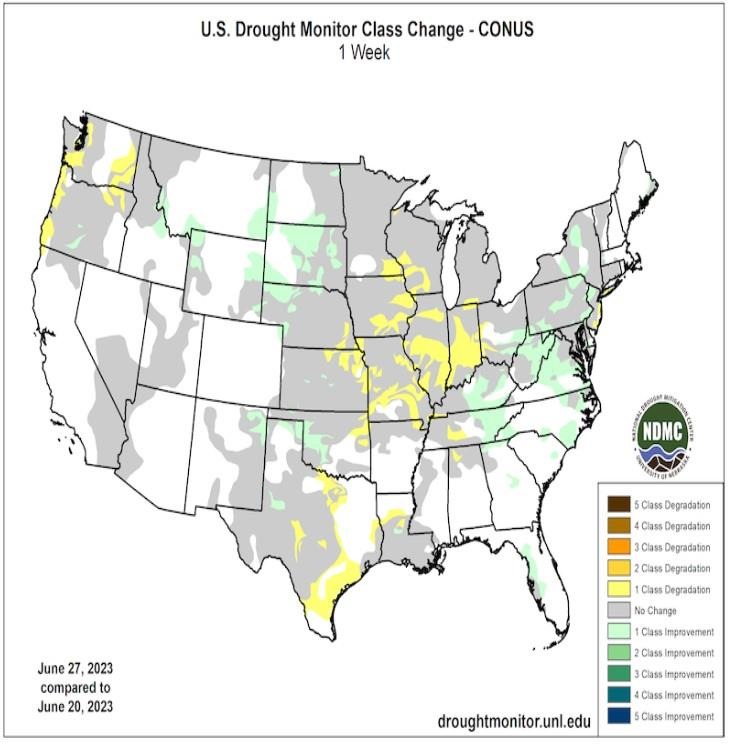Drill down into how to help your soils use and hold onto precious precipitation.
According to Noble Research Institute’s Wyatt DeSpain, soil health directly affects how your ranch captures and uses precipitation. Healthy soil also plays an environmental role by reducing soil erosion and nutrient-laden runoff.

In particular, he says, soil aggregates, or stable units of soil particles that provide structure, directly affect the amount of water soil can absorb in a set period without any runoff, known as the soil’s infiltration rate.
If a rancher is trying to improve their water cycle, DeSpain says the best thing they can do is try to improve the infiltration rates in their soils.
Recall your days making mud pies to better understand how soil structure affects water infiltration. Soil that is too loose with no structure, such as sandy soil, lets water pass through without retaining much moisture. Soil that is too dense or compacted doesn’t let the water penetrate, so most water runs off.
But, healthy soil rich in aggregates allows water to enter the soil and then holds onto the moisture. DeSpain says this type of soil is the perfect combination of clumping together and crumbling apart, and can maintain plant life even in droughts due to its higher water content.
Soils’ ability to absorb and maintain water significantly impacts ranchers’ bottom lines. According to DeSpain, this will become even more critical as the climate models predict the weather will continue to shift toward patterns of drought and extreme precipitation events.
He offers these three tips to improve soil infiltration rates and make the most of water on your ranch.
1. USE LESS FERTILIZER
While fertilizer may make plants grow, it also can cause imbalances in various ecosystems.
Manufactured fertilizer topples the delicate balance of microbes and fungi that helps form soil aggregates, DeSpain says. Soil health is all about balance, and when it comes to aggregate formation — using less man-made fertilizer is a worthy goal.
Not to mention, all water eventually makes its way into streams and oceans. Runoff from fertilized land has very real effects downstream. Fertilizer and chemical runoff disrupt ecosystems in streams, rivers and oceans, such as causing an overgrowth of blue-green algae (actually cyanobacteria) in water environments, which is harmful to many aquatic creatures.
And, as DeSpain reminds us, fertilizer that is washed away as runoff also sends precious dollars downstream, another negative factor amid rising input costs.
2. PRACTICE HIGH STOCK DENSITY GRAZING
While synthetic fertilizer can work against the goal of healthier soils, natural fertilizers, such as cow manure, can work for you. Strategic use of high stocking rates of grazing animals is another way to optimize the water cycle on your ranch, DeSpain says.
High stock density grazing, also called high intensity grazing – larger numbers of livestock grazing a set area over a shorter period – can improve soil health by naturally disrupting the soil in a way that discourages runoff while promoting healthy aggregate formation.
“Getting the hoof action in there breaking up the soils gives us a chance to restart,” DeSpain says. “With the accompaniment of the natural fertilizers that the cows are putting on the land, having this high stocking density essentially breaks open the soils and jumpstarts the systems with the nutrients. Then, those aggregates get reformed.”
While grazing animals disturb soil in a healthy way, soil disturbance with manual tilling has the opposite effect — making land more vulnerable to both erosion and compaction by changing the soil structure.
3. KEEP GROUND COVERED
It may seem counterintuitive, but keeping your ground covered with growing plants is also a great way to retain valuable water on your ranch. Vegetation helps minimize water evaporation from your soil by providing shade.
“You’ll be looking at less direct sunlight hitting your soils, which means less evaporation from the soils from the top layers,” DeSpain says. “Those are going to be the same layers that your plants are drawing your water from, so keeping more water in the soil is a good thing.”
Click here to see more...